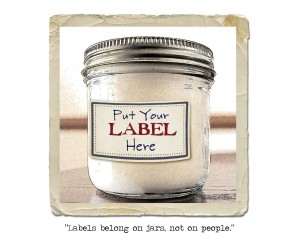Quick! Turn on a fan! It’s like the Sixties in here!
No, avocado-gold decors and shag carpets aren’t making a comeback, but there are some groovy things filling up the old-but-new-again bin—and swinging is among them. In this era where you just about have to boil people before touching them, it almost seems hard to believe that swinging lifestyles are not only thriving, but even trending as big business.
According to clearing houses such as the North American Swing Club Association (NASCA), the renaissance of “The Lifestyle” as it’s called by those in the know is percolating rapidly throughout all classes and communities, fueling the expansion of efficiently organized events and the emergence of top-tier resorts and five-star excursions that cater to the unique needs and desires of swingers on a global scale. As you might imagine, much of the growth in swinging—and a key difference between what’s happening today versus days gone by—is due to the internet. Although the numbers are difficult to pin down accurately because of the confidential nature of the animal, it’s estimated that about two-thirds to three-quarters of today’s swing club participants meet up through popular lifestyle and club web sites. Ultimately, what used to be strictly taboo is gaining significantly greater acceptance as time goes on and the idea that network and mainstream cable outlets have jumped on board is an indicator of how far things have come. Even the Discovery Fit & Health channel has swung over to swinging, producing Secret Sex Lives: Swinging, a mini-series. (Of course, being billed as a “reality show” likely means there will be very little that’s real about it, but it should still be pretty interesting.)
So, what’s behind the resurgence? Is this trend just a throwback to the free-love movement or are couples having some sort of relationship A.D.D. these days? Is the concept of marriage itself becoming outdated? Or is all of this simply a sign that the pendulum is swinging (pardon the pun) away from uptight hypocrisy and over towards more evolved and open-minded sensibilities?
To get a handle on all of this, it’s important to understand that “The Lifestyle” is pretty loosely defined, perhaps by design. Succinctly, swinging is generally about committed couples having sex with other people, but how that’s done these days takes on many different forms—along with differing rules and occasionally with double standards. For example, it’s commonly acceptable for single women to participate in club events while single men are often prohibited. Some clubs even have fairly arbitrary “attractiveness” gauges that limit joining in based on looks. As with most things, there are pluses and minuses. The point is there’s actually no singular “lifestyle” per se, but rather a broad umbrella that encompasses many different ways to go about it—all based on adult consent of course. A common denominator, however, is that most see a key difference between swinging and cheating—a difference that is both a major point of attraction for those who enjoy the scene as well as a big reason why swinging enhances their main relationship rather than detracts from it. Successful swingers attribute the feat to honesty, open communication and feeling secure—all of which help to solidify the foundation in their basic committed relationship. They enjoy being able to safely add variety and excitement in close concert with their partner while preserving the security of their primary bond.
The swingers’ scene is thriving–and getting bigger all the time with about 700 clubs in North America alone. It’s certainly not to the extent of being a completely hiccup-free zone yet, but more and more appear to be learning to live and let live.
Yeah, baby. Groovy indeed.
(For more information about today’s Swinger’s Scene, we recommend visiting NASCA.com and LifestyleMagazine.com. We also welcome all thoughts on the topic–pro or con–so please consider commenting and helping us to further publicize our content. Thank you.)

